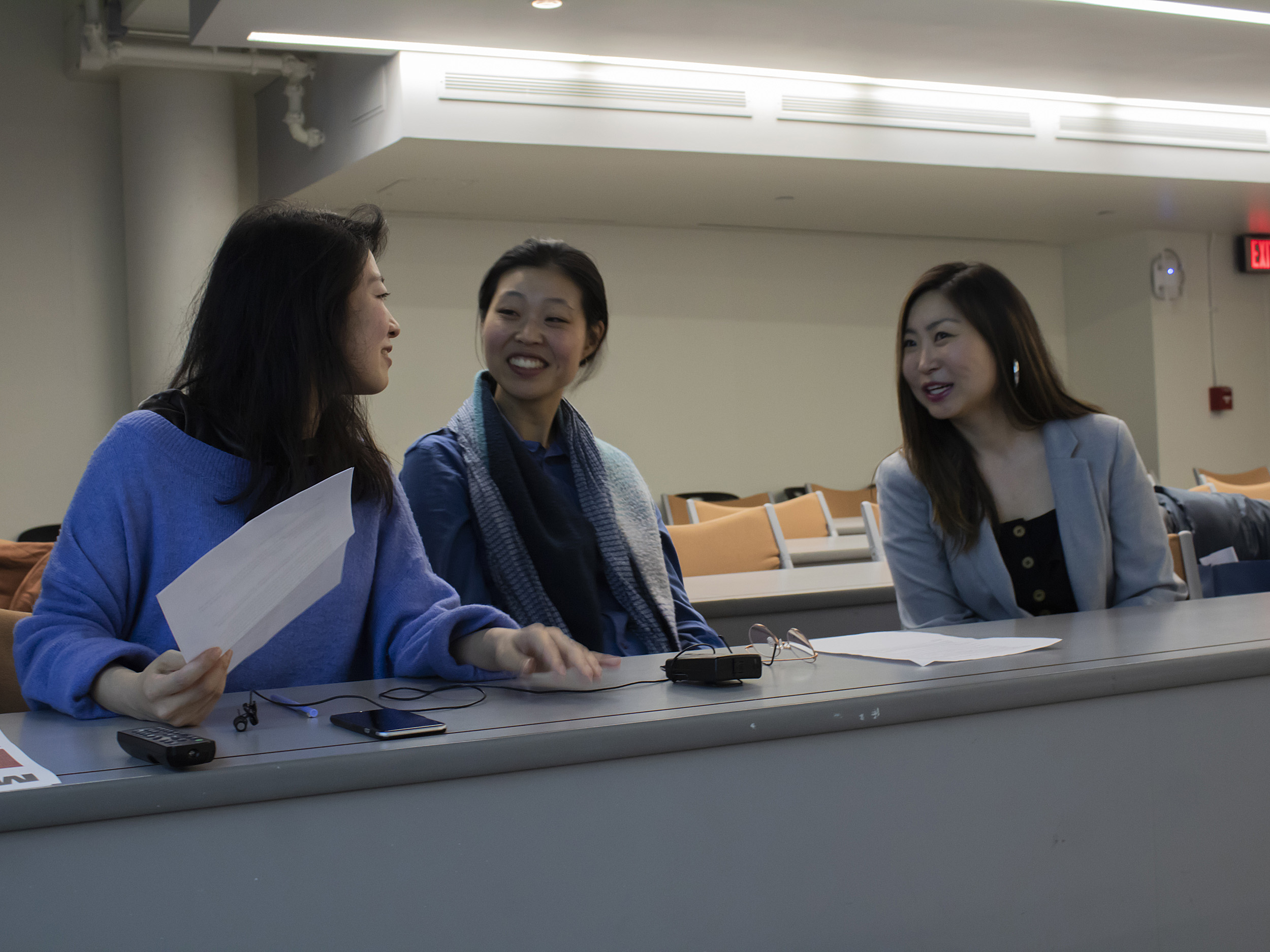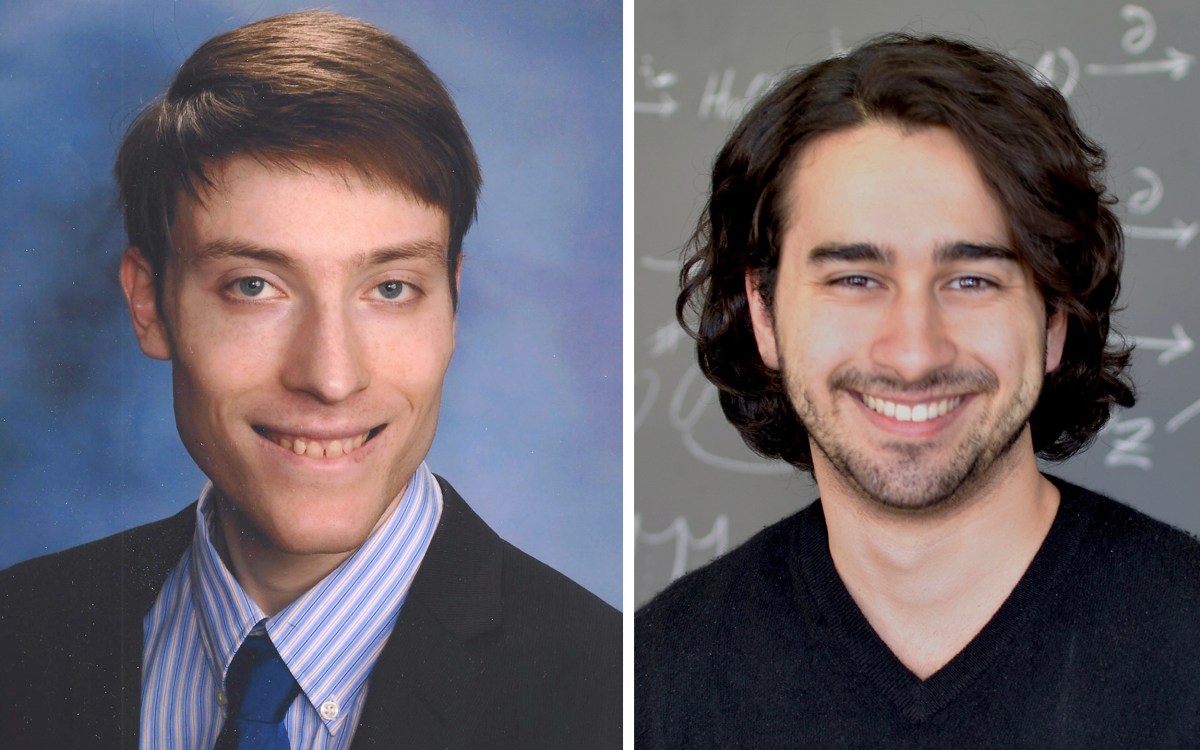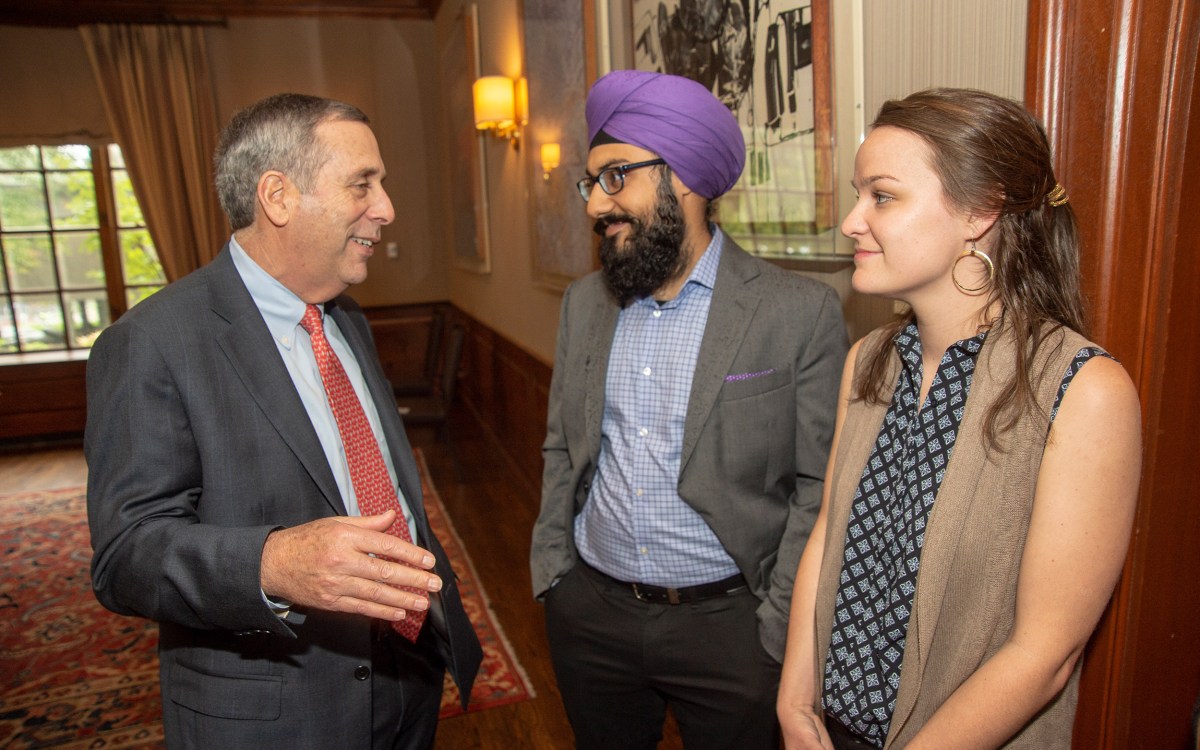
Sohin Hwang (from left), Young Joo Lee, and Margaret Rhee are current Harvard College Fellows in Media Practice.
Photo by María F. Sánchez
Celebrating creativity
A new fellowship program brings practicing artists to campus
Can hashtag movements or Twitter bot text be considered poetry? How can we conduct and present research through art? What is immersive storytelling?
The inaugural group of Harvard College Fellows in Media Practice are tackling these questions and more in their research, teaching, and art on campus. Poet Margaret Rhee, artist and writer Sohin Hwang, and Young Joo Lee, a visual and performance artist, are exploring the interplay of technology and art in the arts and humanities, and encouraging Harvard students to do the same.
As part of their fellowship requirements, all three artists developed new courses that emphasize art practice as a way to engage with academic concepts taught within their host departments on campus. Rhee, an assistant professor of media study at SUNY Buffalo, is working out of the Department of English. Lee is working with concentrators in Theater, Dance & Media, and Hwang is teaching and practicing in the Department of Visual and Environmental Studies.
“It was exciting to think about what it meant to build new media studies that were very arts-centered at Harvard while being housed in English,” said Rhee. “My students are really excited about the intersection of literature and media, and [they] have many pressing political questions.”
In Rhee’s classes “Machine Dreams” and “Poetry Machines,” students worked together and individually to produce creative works including podcasts, videos, and poems, guided by literature. “I’m really proud to see the creative risks they take, inspired by the material we’re reading,” she said.
For Lee, the Theater, Dance & Media concentration is an ideal home for her work in virtual reality and interdisciplinary art. Lee required students to engage with film, animation, and virtual reality in her courses “Immersive Storytelling Using Mixed Media” in the fall and “Tools for Virtual and Real Perceptions” in the spring. In an assignment for her spring course, students worked in pairs on a project in which one partner acted as a storyteller and the other as a listener. Together, each group created a visual representation of the listener’s interpretation of the storyteller’s experience.
“I wanted the students to have the experience of collaboration,” said Lee. “It’s hard to commit so much time to artistic projects while fulfilling other academic requirements, but from the work and the sincerity that the students brought to the class, [it’s clear] people are very much engaged and are excited to make something.”
In the Department of Visual and Environmental Studies, Hwang was pleased by the breadth of her students’ academic backgrounds — including mechanical engineering, anthropology, and history and literature — in her courses “Artistic Research Workshop” and “Algorithmic Performance.” In both classes, Hwang focused on teaching artistic language and methods for exploring students’ research questions for art practice and scholarship.
“When I teach art, the most important thing is to let the students actually experience artwork in reality through their senses and through their bodies,” said Hwang. “It’s really fun to teach students who are new to art but who are familiar with numbers, logic, and programming. They were very hungry to do something experimental with programming languages without being too concerned with problem-solving and efficiency. Making art, they set their own problems and questions and see the bodily impact of their codes.”
In addition to teaching, the fellows also work on their own creative projects. Rhee is writing an academic book project solicited by MIT and Duke University Press, focusing on the relationship between robots and racialization, titled “How We Became Human: Race, Robots, and the Asian American Body.” Hwang’s latest performance and video installation piece is focused on the disconnect between planning a technological system and executing its design, and Lee is designing a virtual border wall between the U.S. and Mexico that reinterprets preconceived notions of security and policing.
“We are living through a technological revolution, which is opening up dynamic new forms of research, scholarship, and communication,” said Robin Kelsey, dean of arts and humanities. “All three fellows have proven to be excellent teachers, creative practitioners, and wonderful colleagues, each contributing to our programs in a distinctive way.”
In the spirit of cooperation, Rhee, Lee, and Hwang found time to collaborate with one another and share their work with the Harvard community. In February, the group worked with Kelsey to organize the inaugural Humanities and New Media Lecture on campus, featuring Ken Goldberg, an artist and the William S. Floyd Distinguished Professor of Engineering at University of California, Berkeley. In April, they delivered a joint lecture titled “Mediators,” hosted by the student group Korea GSD.
“The Media Practice Fellows have been a terrific addition to our community this year,” said Kelsey. “Faculty and students have been telling me what a difference they have made, and I think the program is a powerful model for the future of media practice and other emergent modes of scholarly pursuit.”






